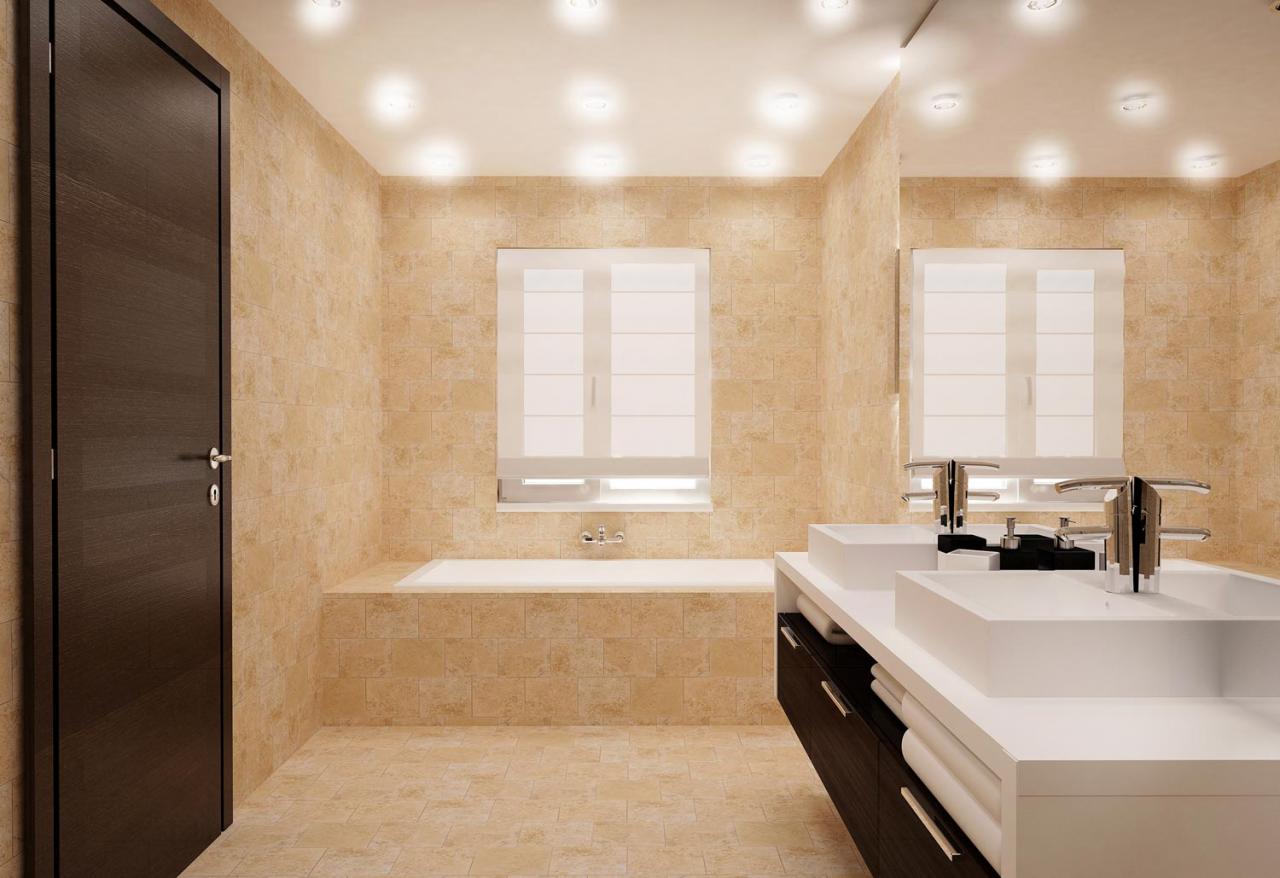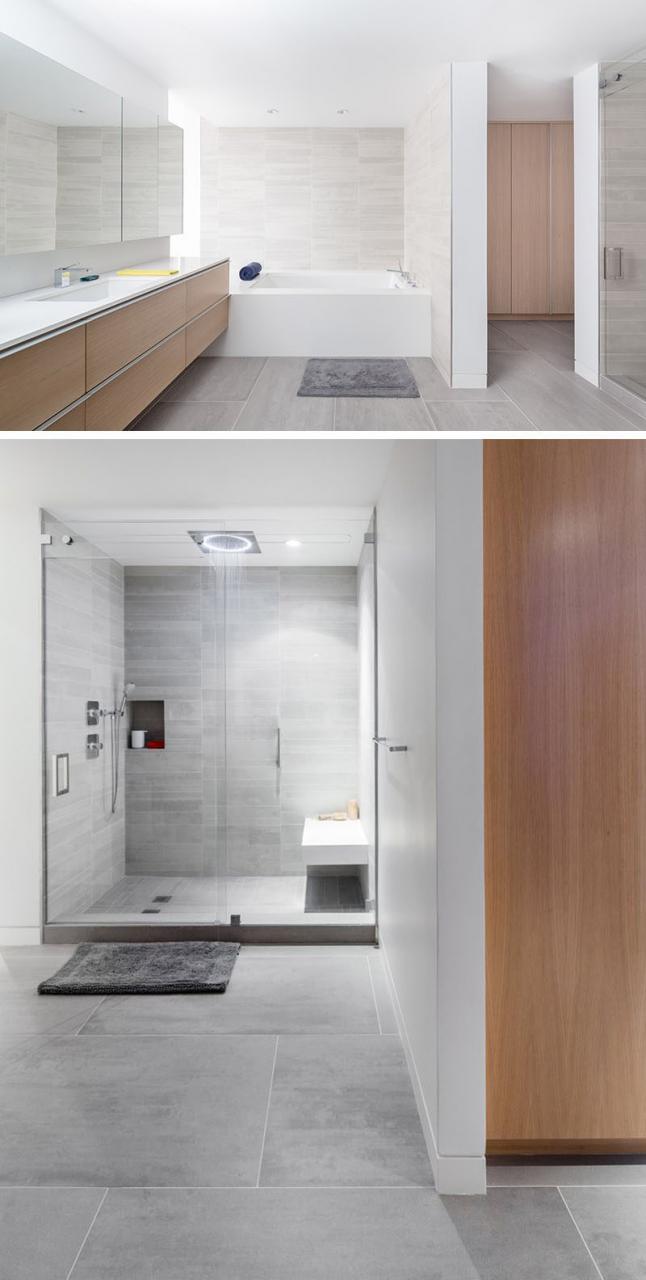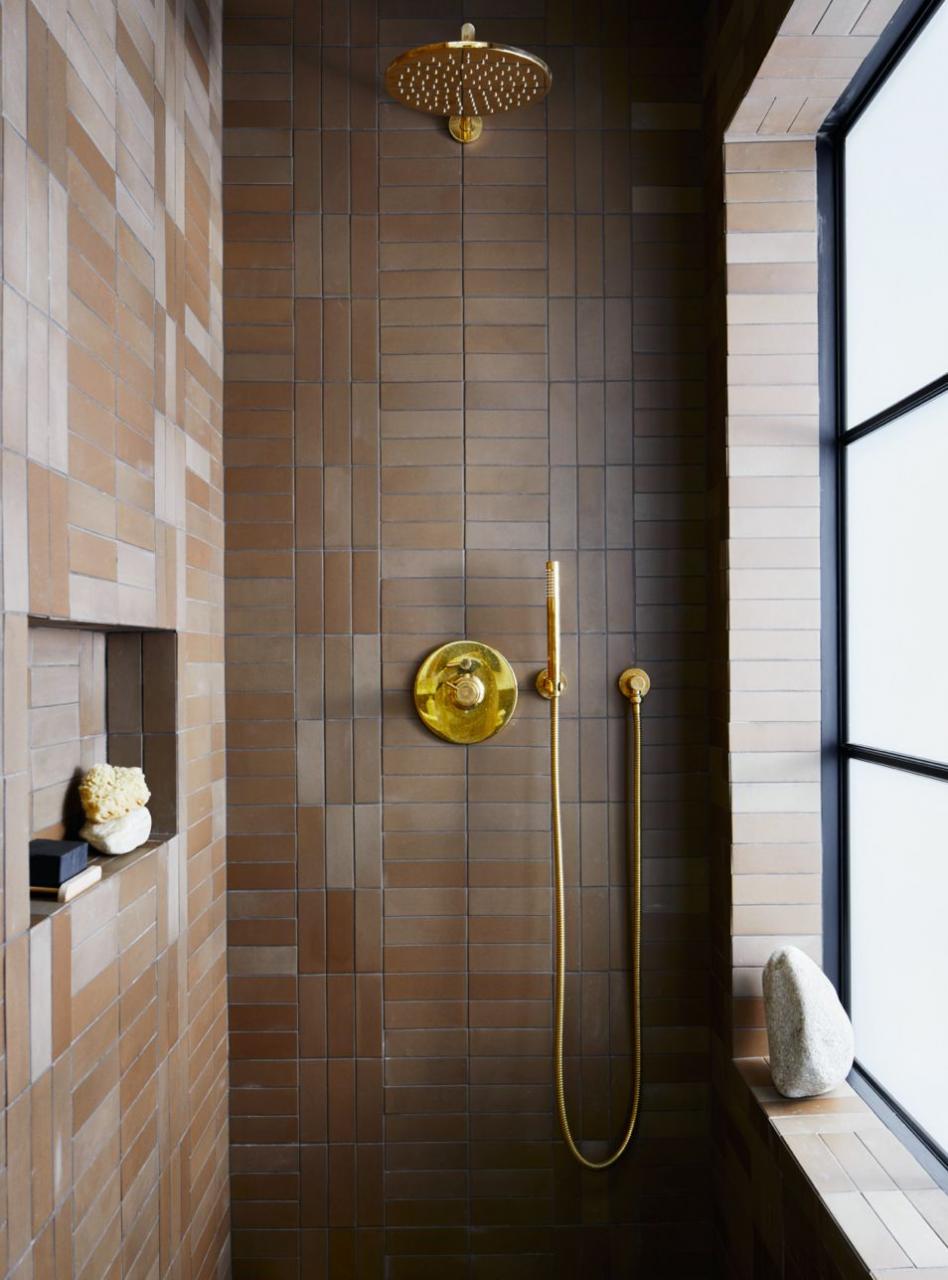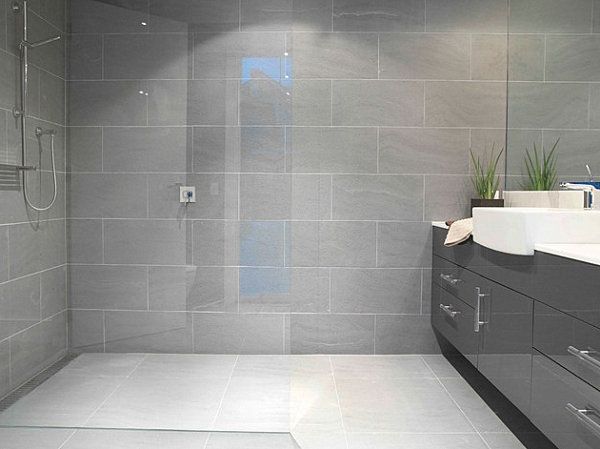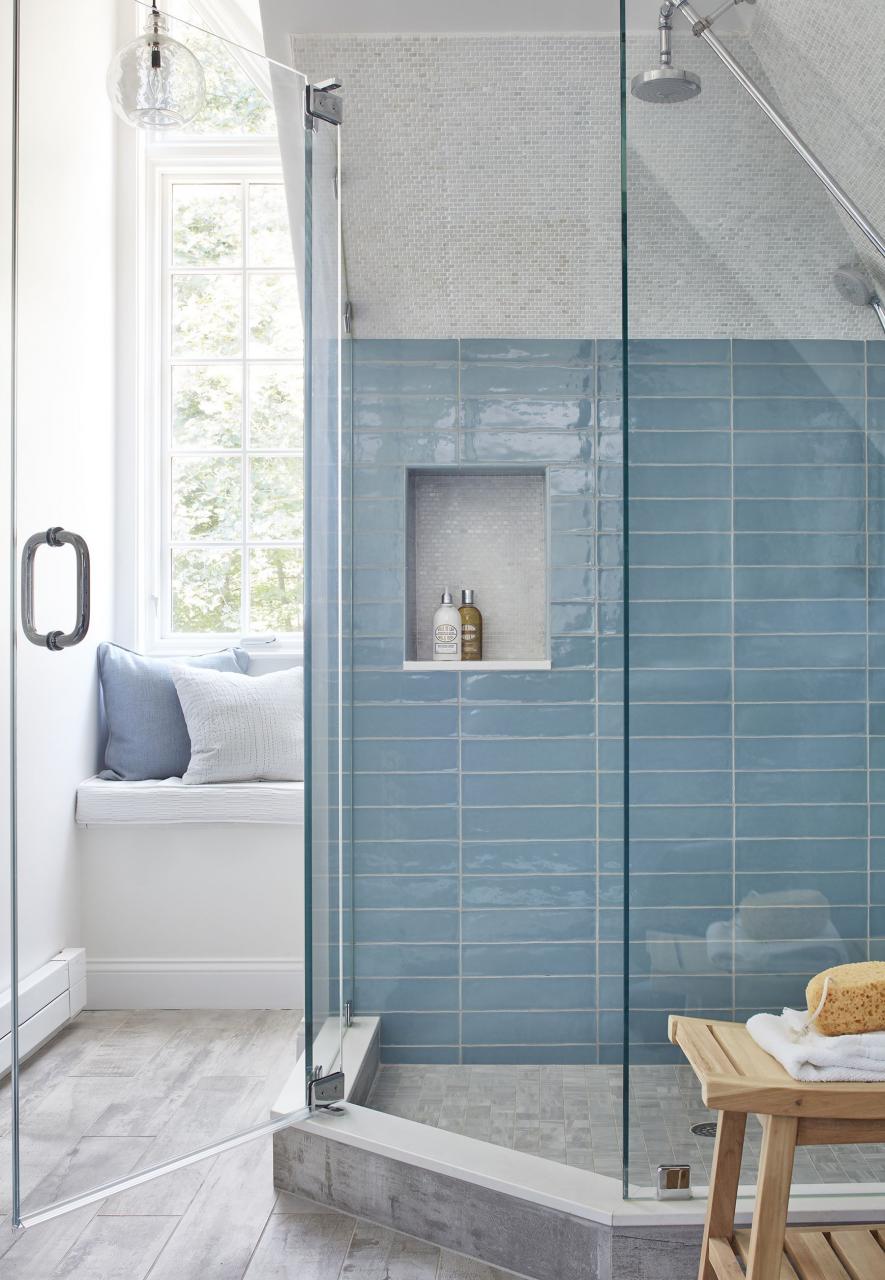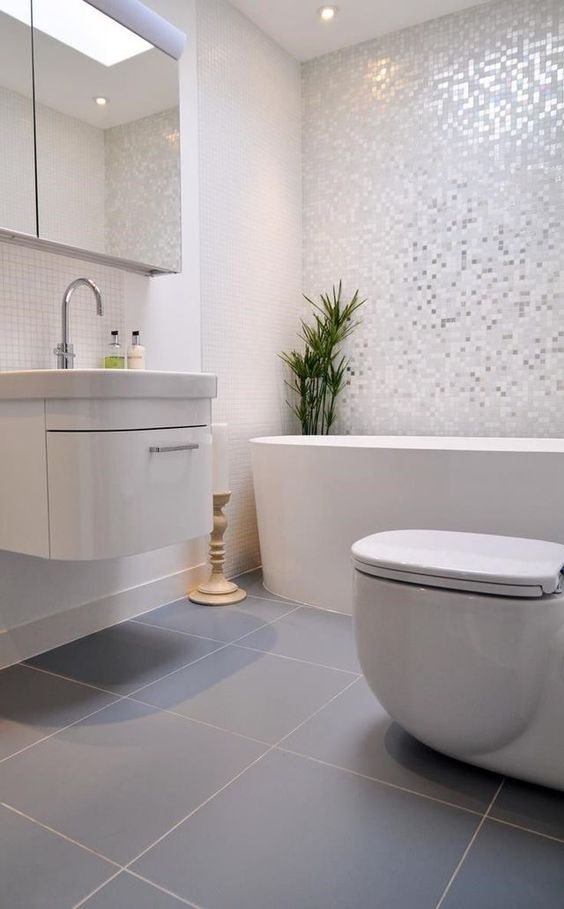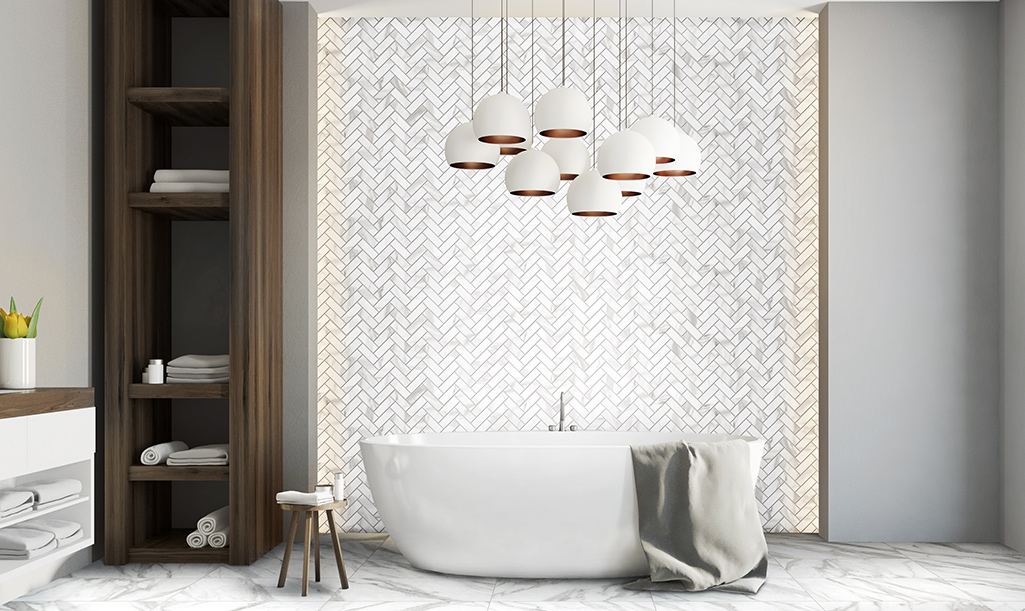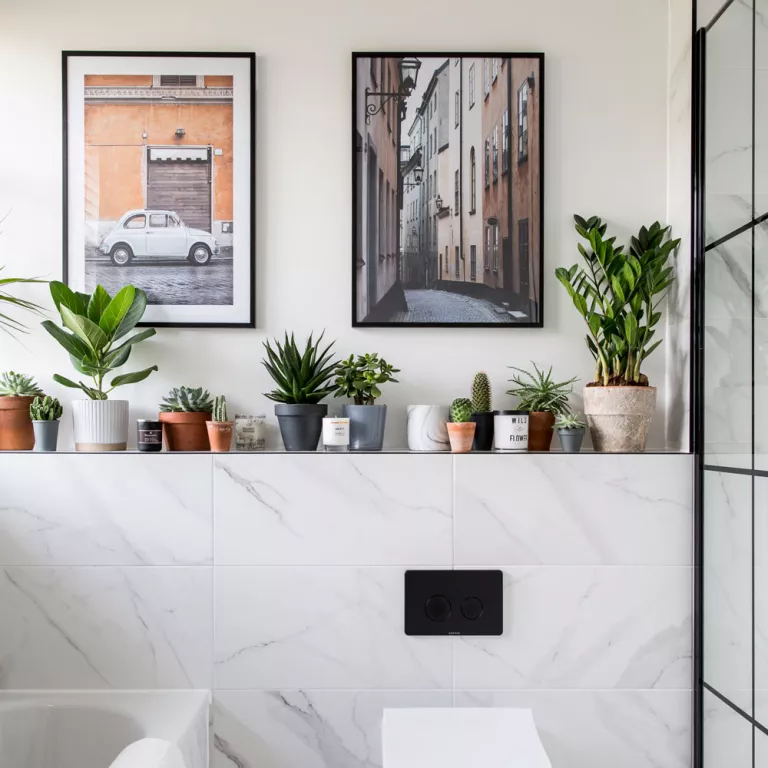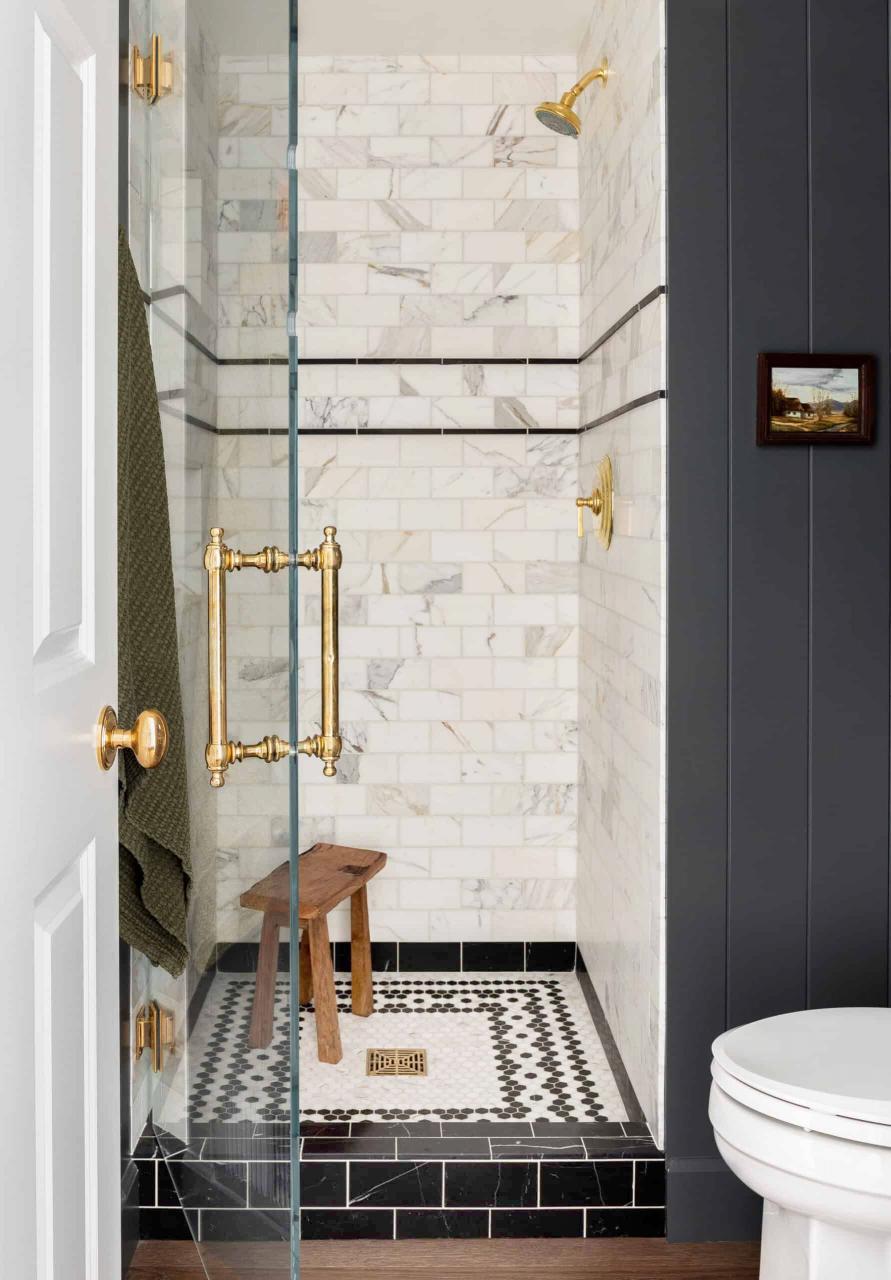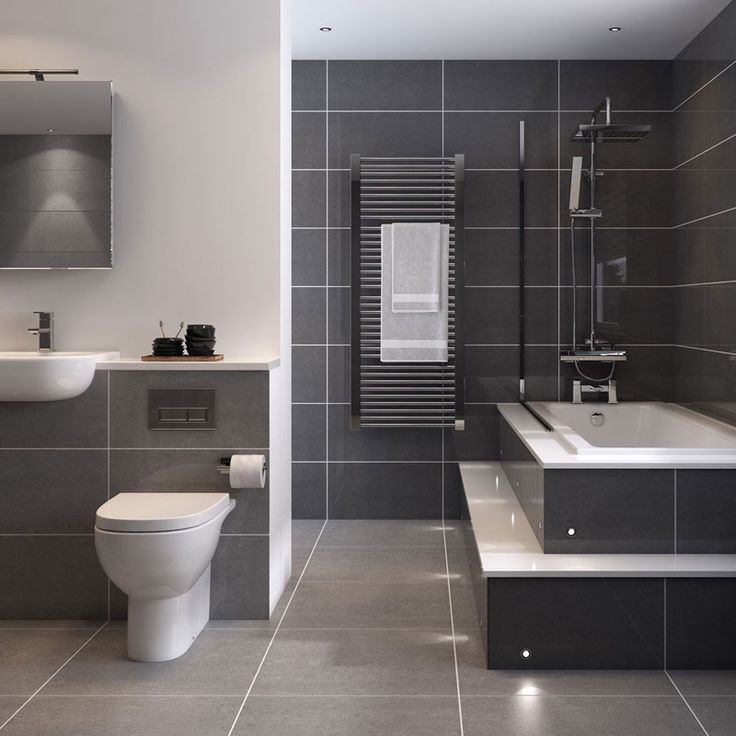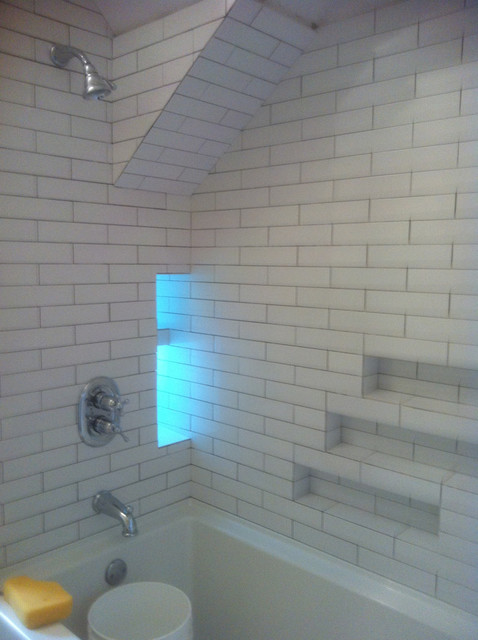Subtle Elegance with Soft Neutral Tiles
When it comes to bathroom design, soft neutral tiles offer a timeless and understated elegance that creates a calming atmosphere. I’ve always found that choosing neutral tiles allows for more versatility in design while maintaining a chic, serene aesthetic.
- A Versatile Foundation: Soft neutral tiles—whether in beige, taupe, or soft greys—provide the perfect backdrop for any bathroom. These subtle tones work with nearly any color scheme, making it easy to swap out accessories and decor over time without clashing. I love how neutral tiles give you the flexibility to evolve your bathroom’s style, from minimalistic to modern or even traditional.
- Creating a Calming Oasis: The beauty of neutral tiles lies in their ability to make a space feel calm and inviting. In a bathroom, this translates to a peaceful, spa-like atmosphere. I’ve found that soft neutral tones help reduce the visual clutter in a space, allowing the room to feel more open and airy. Whether you’re taking a long bath or just getting ready for the day, a bathroom designed with these tiles always feels tranquil.
- Pairing with Natural Materials: Neutral tiles pair beautifully with natural elements like wood, stone, and metal. In my experience, combining light wood cabinetry or marble countertops with soft neutral tiles can create a harmonious, organic feel in your bathroom. It’s a look that feels both modern and timeless, bringing warmth and texture into the space.
- Timeless Appeal: One of the reasons I gravitate towards soft neutral tiles is their timeless appeal. Trends come and go, but neutrals never go out of style. By choosing a classic tile color, you won’t have to worry about your bathroom looking outdated in a few years. Plus, these tones are universally appealing, which is great if you’re considering resale value for your home.
- Customization with Grout Color: Even when using neutral tiles, you can add an extra layer of customization by playing with grout colors. A white or matching grout creates a seamless, soft look, while a darker grout adds a bit of contrast and defines each tile. I like experimenting with grout to give a unique touch to the overall design without taking away from the subtle elegance of the tiles.
- Soft Neutrals in Various Tile Shapes: Neutral tiles don’t have to be boring in terms of shape and size. You can opt for classic subway tiles, large rectangular slabs, or even hexagonal patterns. The subtle color allows you to play around with shapes and layouts without overwhelming the space. I always find that the combination of soft tones and geometric designs creates an interesting yet serene visual.
Bright Whites: Timeless and Clean
When I think of a clean and timeless bathroom design, bright white tiles are always at the top of my list. There’s something about the simplicity and purity of white tiles that never fails to create a fresh and elegant look.
A Classic Look for Any Bathroom StyleBright white tiles are a classic choice for a reason. Whether your bathroom leans towards modern minimalism, vintage charm, or even a rustic style, white tiles fit right in. I love that white can be both bold and understated at the same time. It’s the perfect neutral canvas that works with any design elements you choose to add.
Enhancing Light and SpaceOne of the best things about white tiles is how they reflect light, making your bathroom feel larger and brighter. If you’re working with a small or windowless bathroom, white tiles can open up the space and make it feel more expansive. I’ve seen firsthand how they can transform even the most cramped bathrooms into airy, open spaces.
Endless Customization OptionsWhile white tiles may seem simple, they offer endless customization options when it comes to patterns, sizes, and finishes. You can choose from classic subway tiles, intricate mosaics, or large, glossy slabs. I love how you can change up the look of your bathroom by playing with different grout colors or tile layouts without sacrificing that clean, bright aesthetic.
Keeping it CleanA white-tiled bathroom has the bonus of making cleanliness a top priority. Because white surfaces show dirt and grime more easily, it encourages regular upkeep, which means your bathroom will always look fresh and clean. It’s a small trade-off for the pristine look that bright white tiles offer, and I appreciate the visual reminder to keep things spotless.
Perfect for Minimalist Design For those of us who lean towards minimalist design, white tiles are the perfect choice. They keep the focus on clean lines and simplicity, allowing you to highlight other elements in the bathroom, such as fixtures or accessories. I often use white tiles to create a sense of calm and order, especially when the goal is to design a functional yet stylish bathroom. Timeless and Always on Trend Bright white tiles are always in style, making them a safe choice if you’re looking for longevity in your bathroom design. While trends may fluctuate with bold colors or patterns, white tiles maintain their appeal through the years. I’ve found that investing in a white-tiled bathroom is not only a nod to classic design but also a smart choice for the long run.Pastel Shades for a Soft and Airy Look
Pastel tiles have a special place in my heart. They offer a soft, airy look that’s perfect for creating a relaxing, tranquil bathroom. These gentle hues bring in just enough color without overwhelming the space, making them a great choice for those who want to step away from neutrals but aren’t ready for bold, vibrant shades.
A Subtle Pop of ColorPastel tiles are a fantastic way to introduce a bit of color into your bathroom without going overboard. Whether you opt for pale blues, mint greens, or blush pinks, these soft shades bring a touch of warmth and charm to the space. I love how pastels can brighten up a room while still maintaining a calm and understated vibe.
Creating a Vintage or Retro LookIf you’re a fan of vintage or retro design, pastel tiles are a great way to achieve that look. Think about the pastel-colored bathrooms from the 1950s—soft pink tiles paired with sleek white fixtures. I’ve always found that pastels evoke a sense of nostalgia, making them perfect for those who want to add a retro touch to their bathroom while keeping it stylish and modern.
Pairing with White and NeutralsOne of the things I love most about pastel tiles is how beautifully they pair with white and neutral tones. A bathroom with pastel tiles can still feel clean and crisp when balanced with white fixtures, towels, or countertops. The softness of the pastels adds warmth and personality without detracting from the classic look of white accents.
Perfect for Creating a Soothing AtmospherePastels are inherently calming, which is why I often recommend them for bathrooms where relaxation is key. Soft blues and greens, in particular, have a spa-like quality that promotes relaxation. If you’re looking to create a bathroom that feels like a retreat, pastel tiles are the way to go. They bring a sense of peace and tranquility to the room, making it the perfect place to unwind.
Mixing and Matching Pastel TilesFor a playful, eclectic look, consider mixing and matching different pastel tiles. You could use one color on the walls and another on the floor or create a fun mosaic of various pastel shades. I love how this approach adds a bit of whimsy to the design while keeping the overall look light and airy.
Pastel Tiles with a Matte FinishWhen working with pastels, I often lean towards tiles with a matte finish. The matte surface gives the colors a soft, velvety look that feels more natural and less polished than a glossy finish. In my experience, this finish works well in bathrooms where you want to create a more relaxed and cozy atmosphere, as the matte pastels absorb light in a way that feels calming.
Light Marble Tiles: Natural Beauty with a Luxe Feel
Marble tiles, especially in light shades, are the epitome of luxury in bathroom design. There’s something about the natural veining and subtle color variations that bring an air of elegance and sophistication to the space. I always turn to light marble when I want to achieve a high-end look.
A Timeless MaterialMarble has been used for centuries in architecture and design, and its timeless beauty still holds up today. When you choose light marble tiles, you’re investing in a material that will never go out of style. I love how marble’s natural patterns add depth and interest to a bathroom, even when the color palette remains light and neutral.
Soft Veining for Added EleganceOne of the things I appreciate most about light marble tiles is the soft veining that runs through the stone. Whether you opt for white, cream, or pale grey marble, the delicate veins add texture and visual interest without overpowering the space. The result is a bathroom that feels both elegant and soothing.
Pairing Marble with Metallic AccentsLight marble tiles look especially stunning when paired with metallic accents, such as chrome, brass, or gold fixtures. The cool tones of the marble contrast beautifully with the warmth of the metals, creating a luxurious yet balanced look. I always recommend this combination for those looking to elevate their bathroom’s design without it feeling too ornate.
Marble in Large FormatsFor a sleek, modern look, I love using large-format marble tiles. These oversized tiles create fewer grout lines, making the surface appear more seamless and expansive. In my experience, large marble tiles are perfect for those who want their bathroom to have a clean, contemporary feel while still maintaining a touch of natural elegance.
Combining Marble with Other Light TilesWhile marble is stunning on its own, I also enjoy mixing it with other light tiles for added dimension. For example, you can use marble on the walls and pair it with light ceramic or porcelain tiles on the floor. The combination of different textures and materials creates a layered, sophisticated look that still feels cohesive.
Caring for Marble TilesOne important thing to note when choosing light marble tiles is that they require a bit of extra care. Marble is a porous material, so it’s important to seal it regularly to prevent stains and damage. While the maintenance might seem like a drawback, I find that the beauty and elegance of marble are well worth the effort.
Textured Light Tiles for Added Depth and Interest
If you’re looking to add depth and texture to your bathroom without straying from a light color palette, textured tiles are the way to go. I’ve found that these tiles bring a tactile element to the space, making it feel more dynamic and visually interesting.
Playing with Subtle TextureTextured tiles can add a lot of visual interest without overwhelming the space, especially when using light colors. Whether it’s a slight ripple, raised pattern, or matte finish, textured tiles catch the light in unique ways, giving the bathroom a sense of dimension. I love how textured tiles can be both subtle and impactful, creating a space that feels layered and inviting.
Adding Depth to Small SpacesIn smaller bathrooms, textured tiles can create the illusion of more space by adding depth to the walls or floors. I’ve often recommended textured tiles for powder rooms or compact bathrooms where a flat, plain surface might feel too constricting. The texture adds an element of movement, which can make the room feel larger and more open.
Combining Texture with Light ColorsWhen working with light colors, texture becomes an essential element to prevent the design from feeling flat. I find that a soft white or beige tile with a slight texture can make all the difference in adding visual appeal to a bathroom. The light color keeps the space feeling bright and airy, while the texture gives it a more interesting and personalized look.
Textured Tiles for the ShowerOne of my favorite places to incorporate textured light tiles is in the shower. The texture not only adds a design element but also serves a functional purpose by providing a non-slip surface. I often recommend these tiles for shower floors or walls, where they add both safety and style.
Contrasting with Smooth SurfacesTo create a balanced design, I like to pair textured tiles with smooth surfaces. For example, you could use textured tiles on one wall or as an accent feature, while keeping the rest of the bathroom sleek and polished. This contrast adds depth and interest without overwhelming the space, and it’s a great way to highlight different areas of the bathroom.
Choosing the Right TextureThere are so many options when it comes to textured tiles, from subtle patterns to bold, raised designs. I tend to gravitate towards more subtle textures when working with light colors, as they add interest without being too loud. Whether it’s a wavy pattern or a simple geometric design, I love how texture can elevate the overall look of the bathroom while keeping it light and fresh.
Glossy Tiles: Enhancing Light and Space
Glossy tiles are one of my favorite ways to brighten up a bathroom. The reflective surface not only enhances the light in the room but also adds a sleek, modern feel to the space. If you’re looking to make your bathroom feel more open and airy, glossy light tiles are a fantastic option.
Maximizing Light ReflectionOne of the main benefits of glossy tiles is their ability to reflect light, making the room feel brighter and more spacious. I’ve often used glossy tiles in bathrooms with limited natural light, as they help bounce the light around the room and create the illusion of a larger space. Whether it’s natural or artificial light, glossy tiles amplify the brightness, making your bathroom feel fresh and inviting.
A Sleek and Modern AestheticGlossy tiles lend themselves to a more contemporary design aesthetic. The polished surface gives the bathroom a clean, streamlined look that feels both elegant and modern. I love using glossy tiles in minimalistic or modern bathrooms, where the focus is on clean lines and simplicity. The shiny surface adds a touch of glamour without being over the top.
Easy to Clean and MaintainAnother advantage of glossy tiles is that they’re incredibly easy to clean. The smooth surface resists dirt and grime, making it simple to wipe away water spots, soap residue, or dust. In my experience, glossy tiles are perfect for high-traffic bathrooms where practicality and cleanliness are important. Plus, they maintain their shine with minimal effort, which is always a bonus.
Pairing Glossy Tiles with Matte FinishesFor a more dynamic look, I like to pair glossy tiles with matte finishes. The contrast between the two creates a sense of depth and texture while keeping the overall color palette light. For example, you could use glossy tiles on the walls and matte tiles on the floor, or mix and match glossy and matte tiles within a single feature wall. I find that this combination adds a bit of visual interest without overwhelming the space.
Glossy Tiles in Soft TonesWhile glossy tiles are often associated with bold, dramatic colors, they also work beautifully in soft, light tones. I particularly love how pale greys, whites, and pastels look in a glossy finish. The reflective surface enhances the softness of the color, giving the room a delicate, almost ethereal feel. It’s a look that’s both subtle and striking, making the bathroom feel calm yet luxurious.
Perfect for Accents or Feature WallsIf you don’t want to use glossy tiles throughout the entire bathroom, they make for stunning accent walls or features. I often recommend using glossy tiles as a backsplash behind the sink or as a feature wall in the shower. The reflective surface draws attention to these areas, turning them into focal points while still maintaining a cohesive, light-filled design.
Mixing Light Tile Patterns for a Fresh, Modern Aesthetic
One of the most exciting ways to create a fresh and modern bathroom design is by mixing different light tile patterns. It’s a trend that allows for creativity and personalization while still keeping the space cohesive and stylish. I love experimenting with different patterns to create a bathroom that feels both dynamic and serene.
Combining Geometric and Organic PatternsWhen mixing tile patterns, I like to start by combining geometric and organic shapes. For example, pairing hexagonal tiles with soft, wavy patterns creates a visually interesting contrast that’s still balanced. I find that geometric shapes bring structure to the design, while organic patterns add a sense of flow and movement. Together, they create a bathroom that feels both modern and harmonious.
Sticking to a Cohesive Color PaletteThe key to mixing tile patterns without overwhelming the space is to stick to a cohesive color palette. I always recommend using light colors, such as whites, beiges, or soft pastels, to tie the different patterns together. By keeping the color palette consistent, you can mix a variety of patterns without the design feeling too chaotic. The light tones help maintain a sense of calm and openness in the bathroom.
Creating a Focal Point with Mixed PatternsOne of my favorite ways to use mixed tile patterns is by creating a focal point in the bathroom. For example, you could use one pattern on the floor and another on a feature wall to draw attention to different areas of the space. I’ve found that this approach works particularly well in larger bathrooms, where you have more room to play with different design elements without the space feeling too busy.
Mixing Textured and Smooth PatternsTo add depth and interest to the design, I like to mix textured and smooth tile patterns. For example, you could use smooth, glossy tiles on the walls and textured tiles on the floor. The contrast between the two surfaces adds a tactile element to the bathroom, making the space feel more dynamic. I find that this approach works particularly well in modern bathrooms, where the focus is on creating a layered, multifaceted design.
Experimenting with ScaleWhen mixing tile patterns, experimenting with scale is a great way to create visual interest. I often recommend pairing large-format tiles with smaller, more intricate patterns for a balanced look. For example, you could use large, light-colored tiles on the floor and pair them with smaller, mosaic tiles on the walls. The difference in scale adds a sense of depth and dimension to the bathroom, making it feel more modern and sophisticated.
Keeping It BalancedWhile mixing tile patterns is a fun way to personalize your bathroom, it’s important to keep the design balanced. I always advise against using too many patterns in a small space, as it can make the bathroom feel cluttered. Instead, choose one or two areas to highlight with mixed patterns, and keep the rest of the design simple and cohesive. In my experience, this approach creates a bathroom that feels fresh, modern, and effortlessly stylish.
